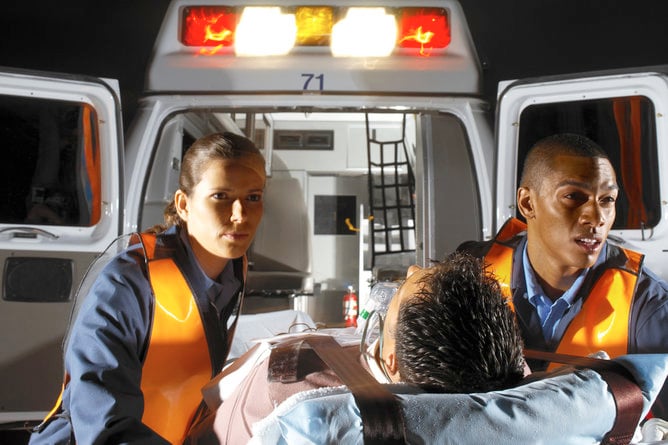
As an emergency responder, you know what a vital role training plays in job preparedness. You can’t predict what the next call will be, so you had better be ready for anything your community throws at you. Some calls are standard: the unresponsive patient, the elderly person having chest pain, or the child who fell off his bike, breaking his arm. These types of calls come in with such frequency, that training for them can seem redundant and unnecessary.
But what about those rarer calls? The ones you may encounter only once a year, or once in a lifetime? As an EMT, you must be prepared to handle any emergency situation, from the mundane to the freak accident. That’s where training and preparation come in.
Although some have acknowledged the limitations in continuing EMS education, there are still plenty of resources and guidelines available when it comes to improving your knowledge and skills sets. And even those standard calls demand good technique and a thorough understanding of pathophysiology. No matter what the call entails, you had better be ready to make critical decisions concerning patient care. And none are more critical than airway management.
So let’s take a look at three airway scenarios in which you will benefit from a bit of extra training and preparation.
The Trauma Patient
Trauma comes in many forms, all of which can impact the airway. The head-on collision involving the unrestrained driver; the suicidal shotgun blast to the mouth; or the victim of battery who has taken a fist to the face, each of these scenarios have the potential for airway obstruction in the form of blood, tissue, and teeth, all of which can impede airway management. Here are a few must-haves when it comes to treating these patients:
- Personal Protection: before you treat the patient, protect yourself! Gloves, goggles, and masks come in handy when dealing with bloody trauma victims.
- Suction at the Ready: effective suctioning can not only remove blood, but can clear the airway of traumatic debris. Have a reliable portable suction unit on hand, with an array of catheters that can do the job.
- Airway Adjuncts: placement of an adjunct can be challenging in the presence of facial trauma. That EOA might not work if the mouth is a pulpy mess. Consider a nasopharyngeal option or do your best until an advanced airway can be placed by a paramedic.
The Pediatric Patient
Patients come in all shapes and sizes, and none can be more challenging than the smallest of victims. Pediatric patients are rarer than adults, and can be intimidating to treat, especially for rescuers who don’t spend time among children. A screaming infant can cause any responder to pause, and even scarier are those infants not making a sound. But even your smallest patients can be approached with confidence and courage if you have the proper training and have practiced your skills. Here are a few tips for managing the pediatric airway:
- Be Proactive: don’t shy away from managing the pediatric airway. Practice your airway skills (even the simple skill of bagging), so that when the time comes, you can treat the patient with confidence.
- Have the Right Equipment: make sure you have a range of sizes for your airway adjuncts and review the techniques for proper sizing.
- Tailor your Suction Technique: remember when suctioning a small child or infant that the use of full suction can be detrimental to their small orifices. Dial back the suction pressure and guide the catheter with precision when working within the tight confines of the juvenile’s mouth or nose.
The Elderly Patient
As the population ages and folks live longer, more of your patients will fall under the guidelines of geriatrics. And when it comes to managing the geriatric airway, there are a few important issues to keep in mind:
- Be Alert for Hardware: most elderly patients have had some form of dental work in the past, so keep alert for dentures, bridges, and loose teeth when placing an airway adjunct.
- Suction with Care: those same dental prosthetics can interfere with oral suctioning, so stay alert and use the same care and caution you exercise with pediatric patients.
- Adapt and Respond: if you must assist ventilations, make sure you maintain a tight seal.
Lack of teeth or loose dentures can make bagging a challenge, so pay attention to your seal. If the dentures are secure, leave them in place to improve mask fit.
No matter the patient, no matter the airway, proper training and preparation can make any emergency manageable. So stay up on the latest literature, practice your skills, and run through scenarios so that when the time comes, you’re ready to respond!














